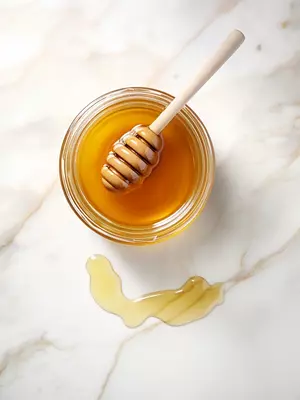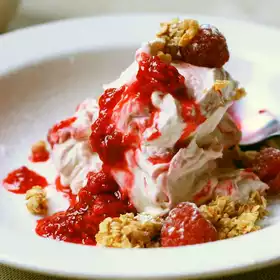Honey
Honey is a sweet, viscous food produced by bees from the nectar of flowering plants. Humans have collected and used honey since prehistoric times, first as a highly-prized food and later as a sweetening agent. Honey bees transform the nectar into honey by regurgitating it into wax honeycombs inside the beehive where natural enzymes break down the sugars into glucose and fructose. This thick, amber-coloured liquid is then sealed tightly until use.
Botanically, honey derives from the nectar collected by bees from flowering vegetation; most comes from clover, acacias, citrus and eucalyptus. The floral source affects the flavour, colour and antioxidants present in raw honey. Honey has an intensely sweet, slightly floral taste along with mild acidity and earthy, musky notes. Its thick, sticky texture helps retain moisture in baked goods.
In cooking, honey pairs well with spices, nuts, citrus, pepper, cheeses and seafood. It can be substituted for sugar or corn syrup in baked goods, glazes, marinades, sauces and drinks. Honey should not be given to infants due to the risk of infant botulism. While valued since ancient times as a medicinal agent and rare delicacy, the advent of industrial food processing made honey widely available as an affordable sweetener and common baking ingredient. Today it remains a beloved natural sweetener as well as an important winter food source for honey bees.

Nutrition
| Per 100 g | Daily Value | |
| Calories | 303 | 12% |
| Total fat | 0 | 0% |
| Saturated fat | 0 | 0% |
| Protein | 0.3 g | 0.4% |
| Sodium | 3 mg | 0.1% |
| Potassium | 3 mg | 0.1% |
| Cholesterol | 0 | 0% |
| Carbohydrates | 83 g | 25% |
| Fibre | 0.2 g | 0.7% |
| Sugar | 83 g | 250% |


